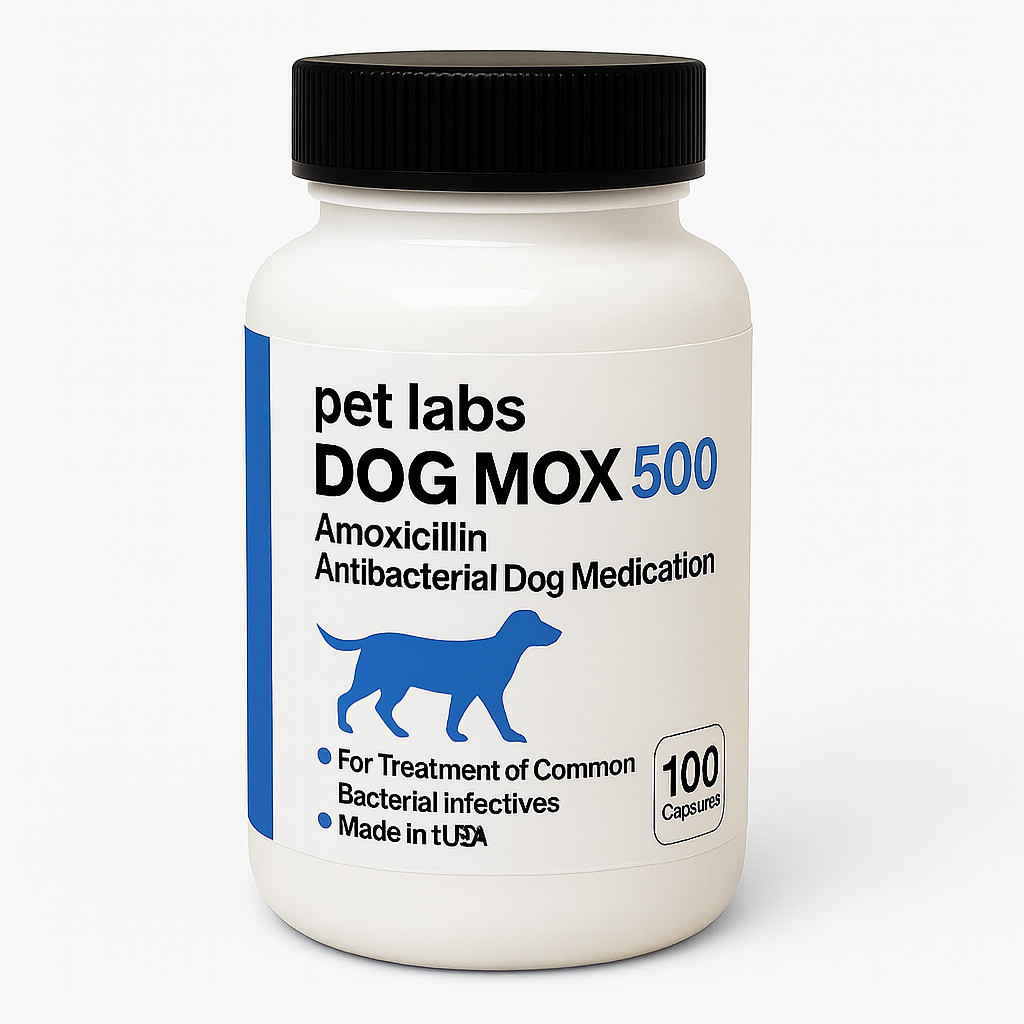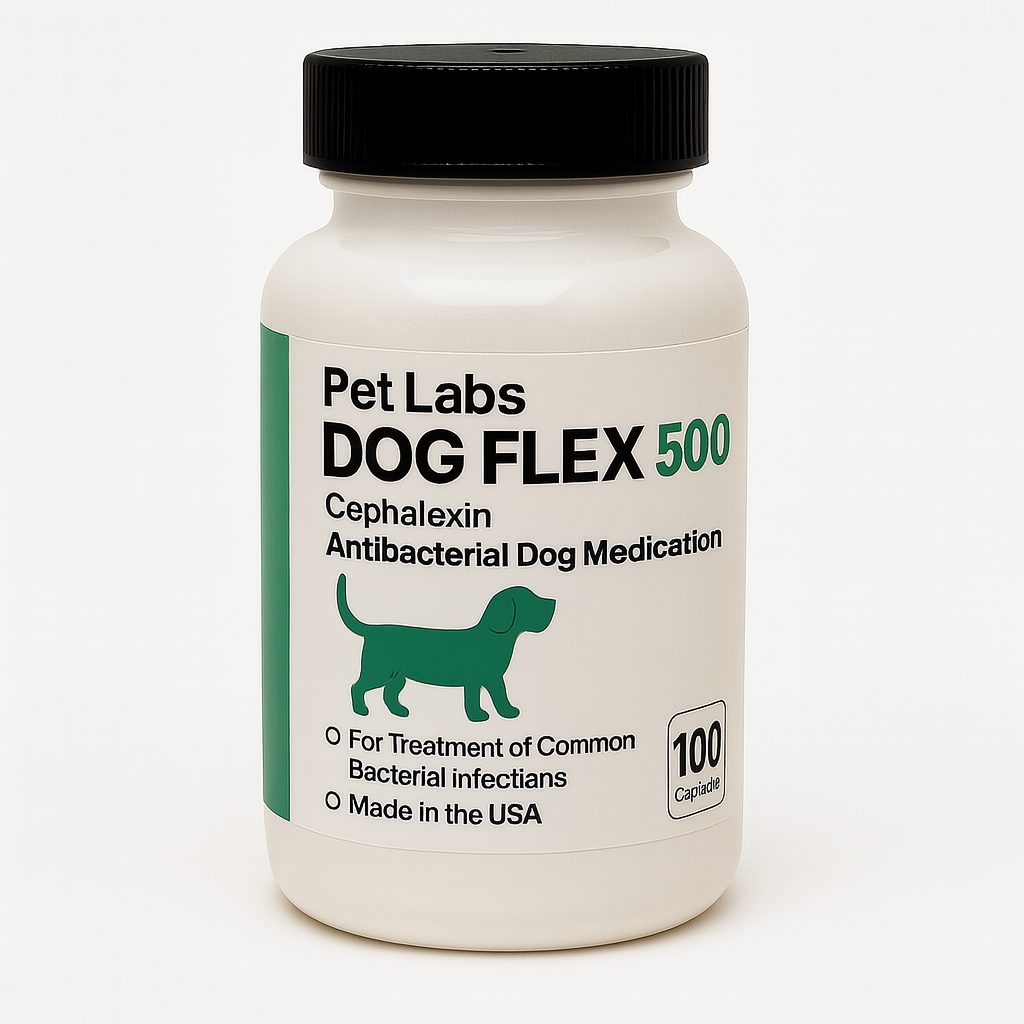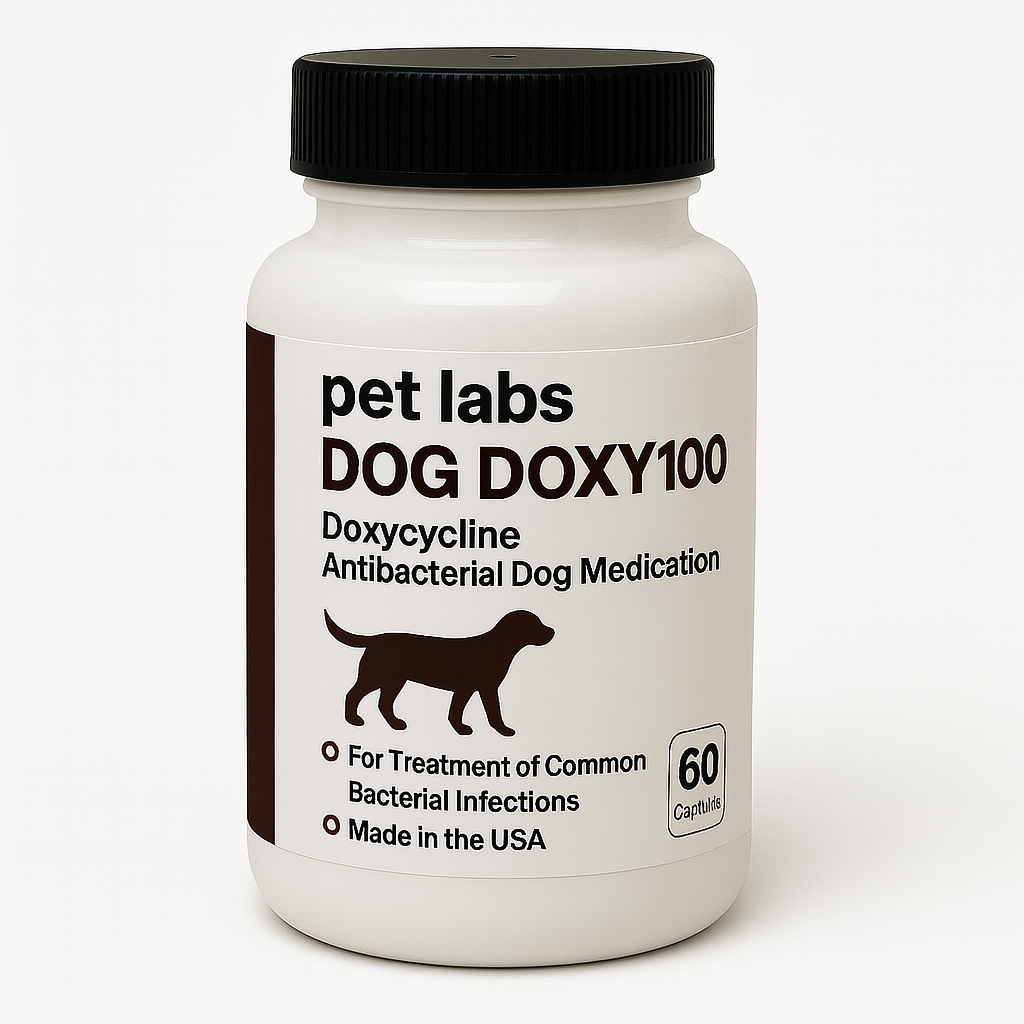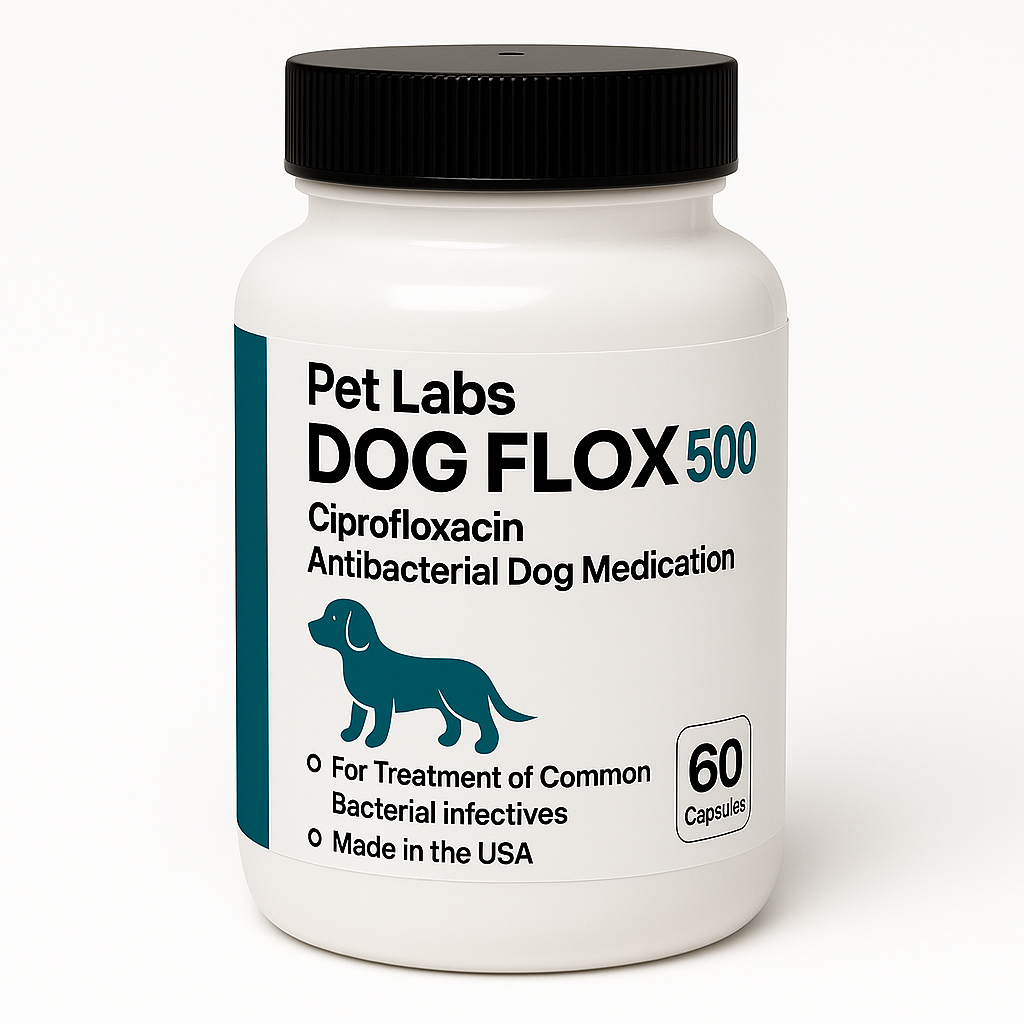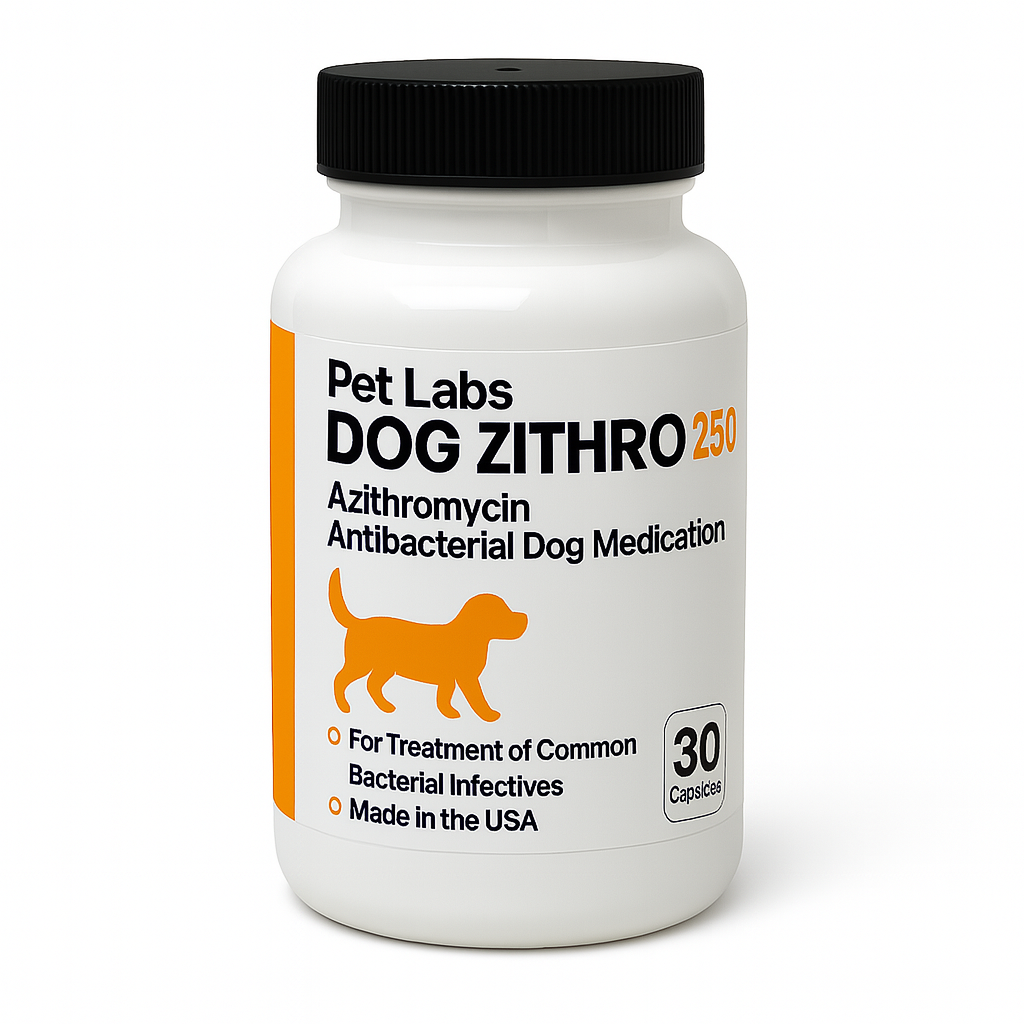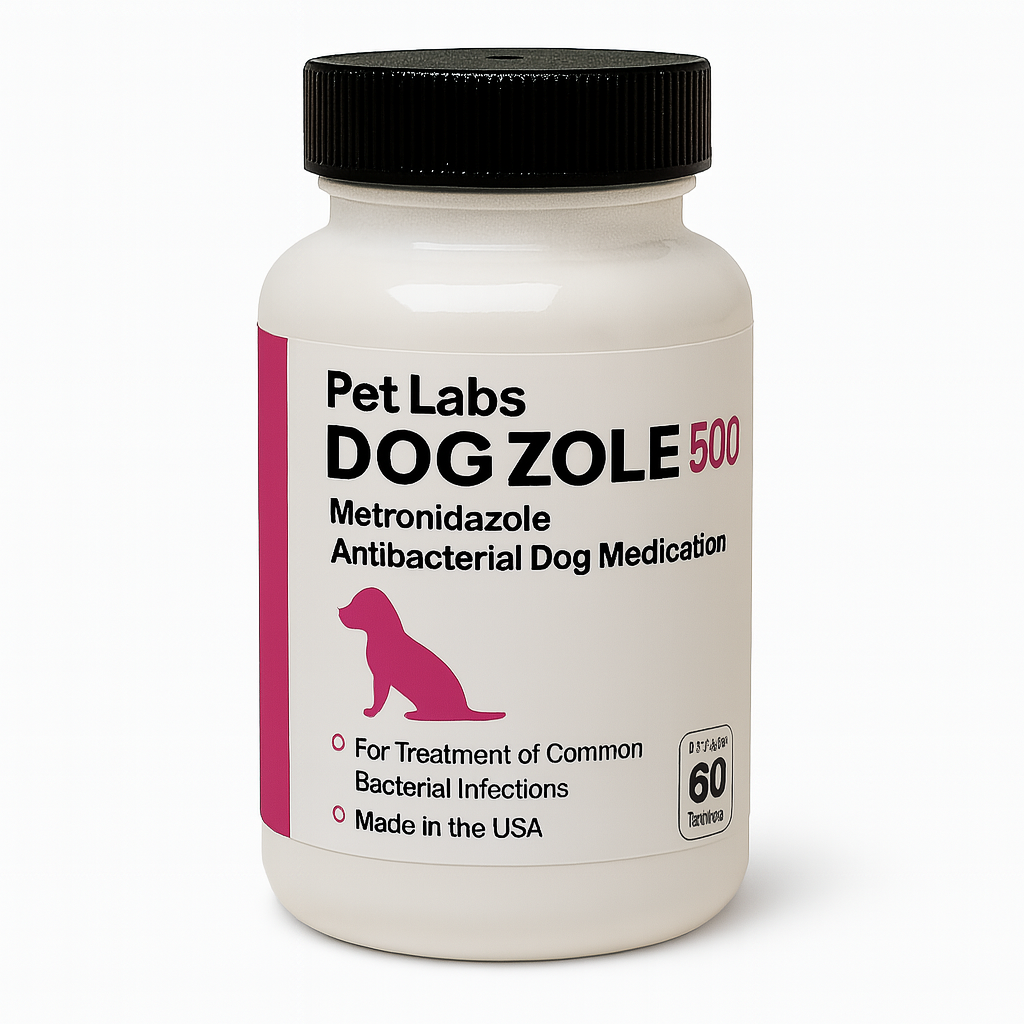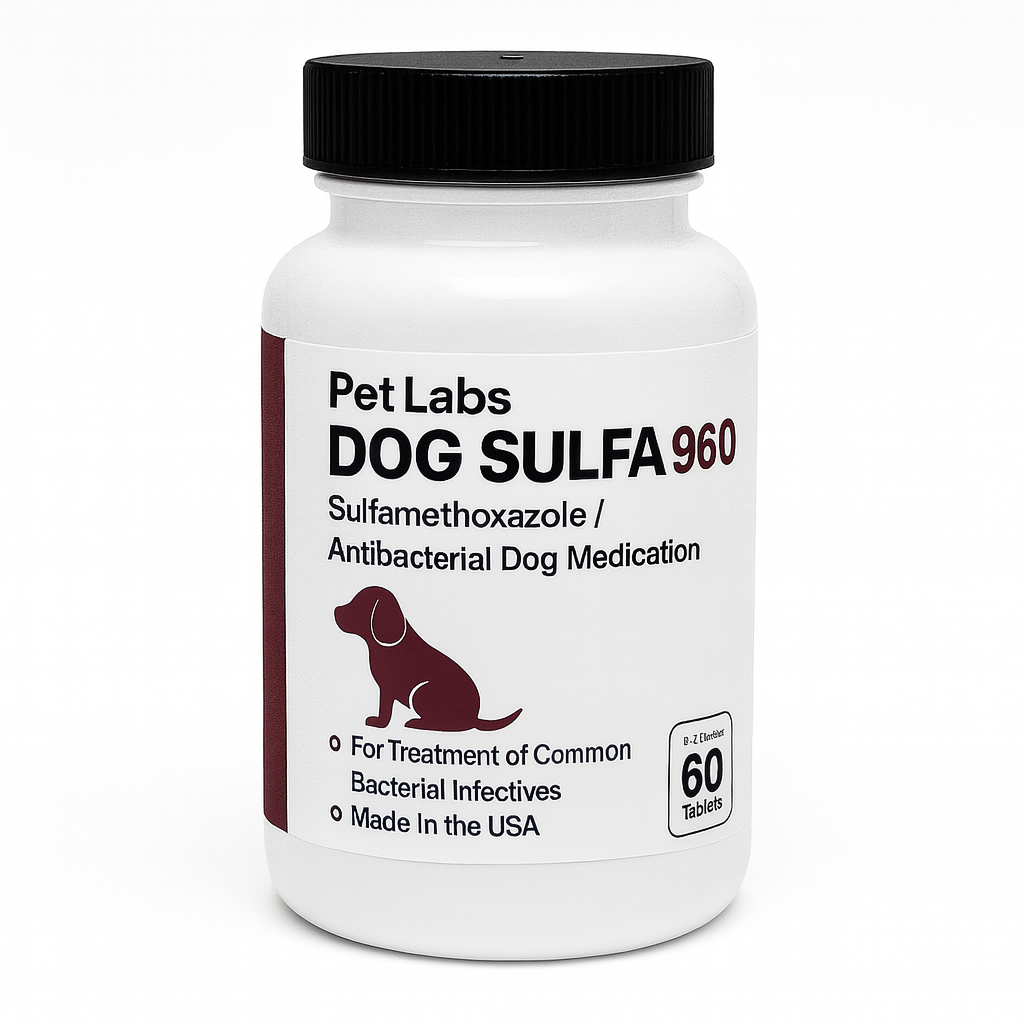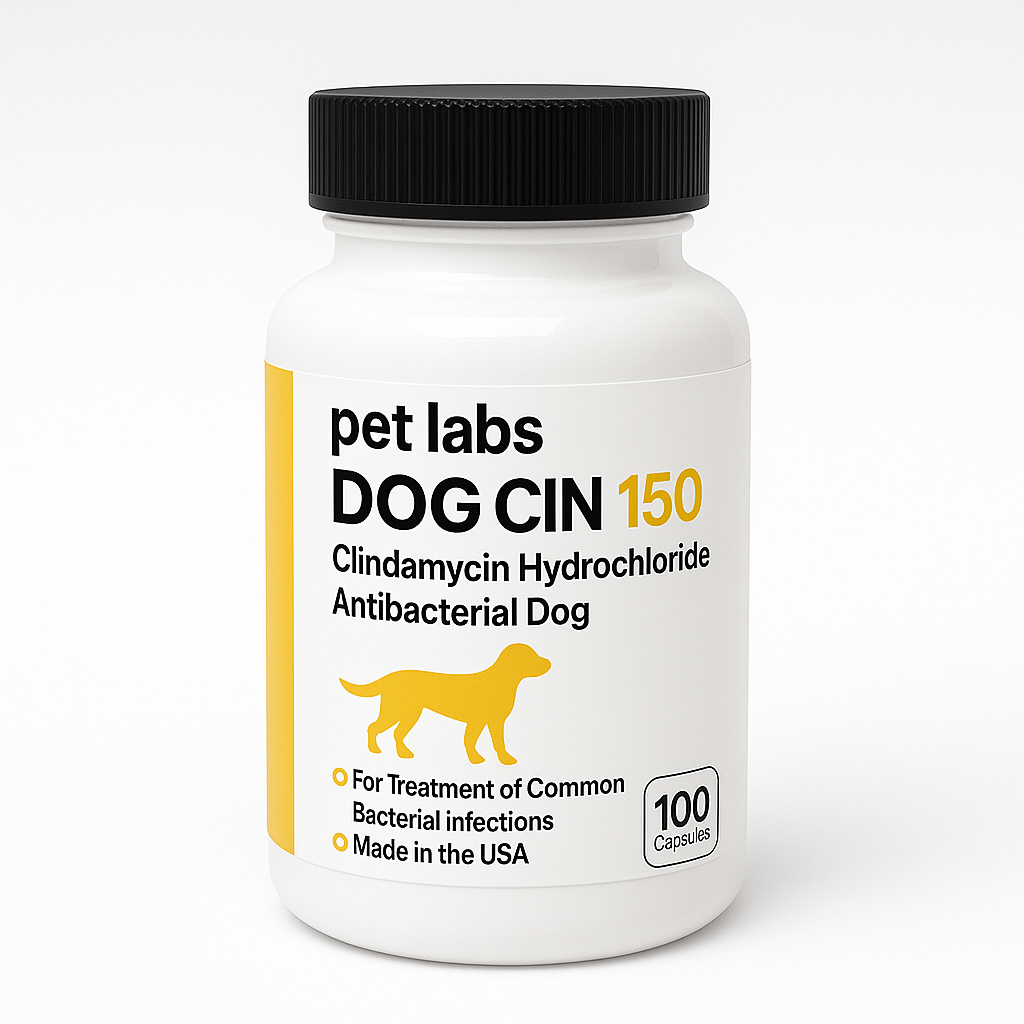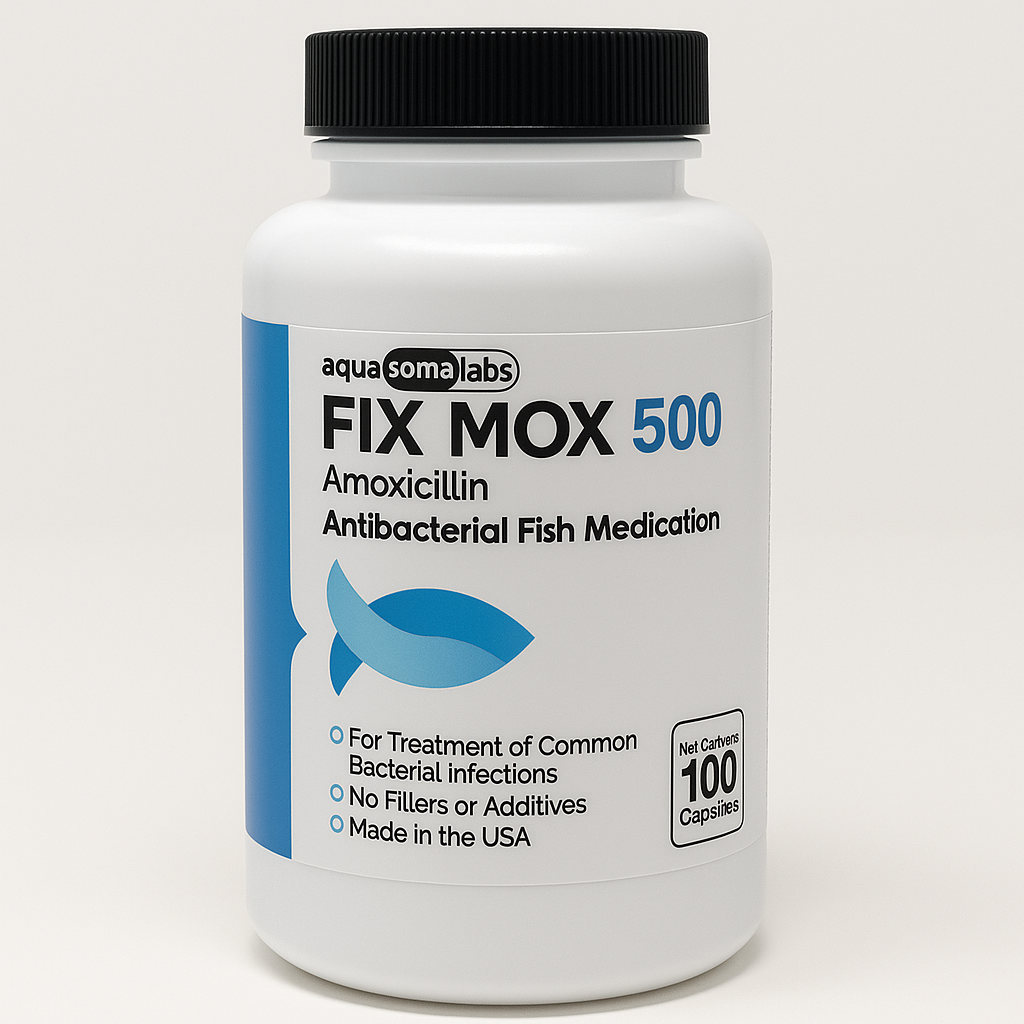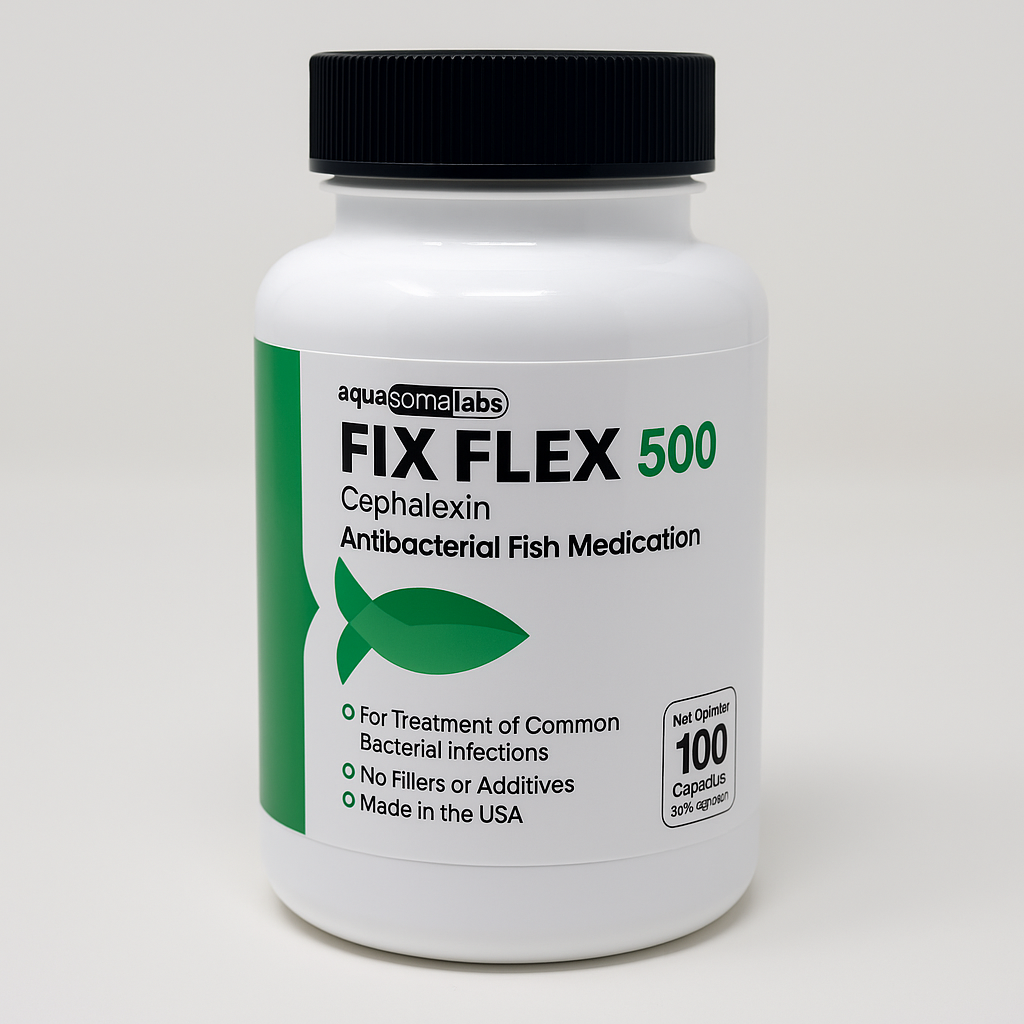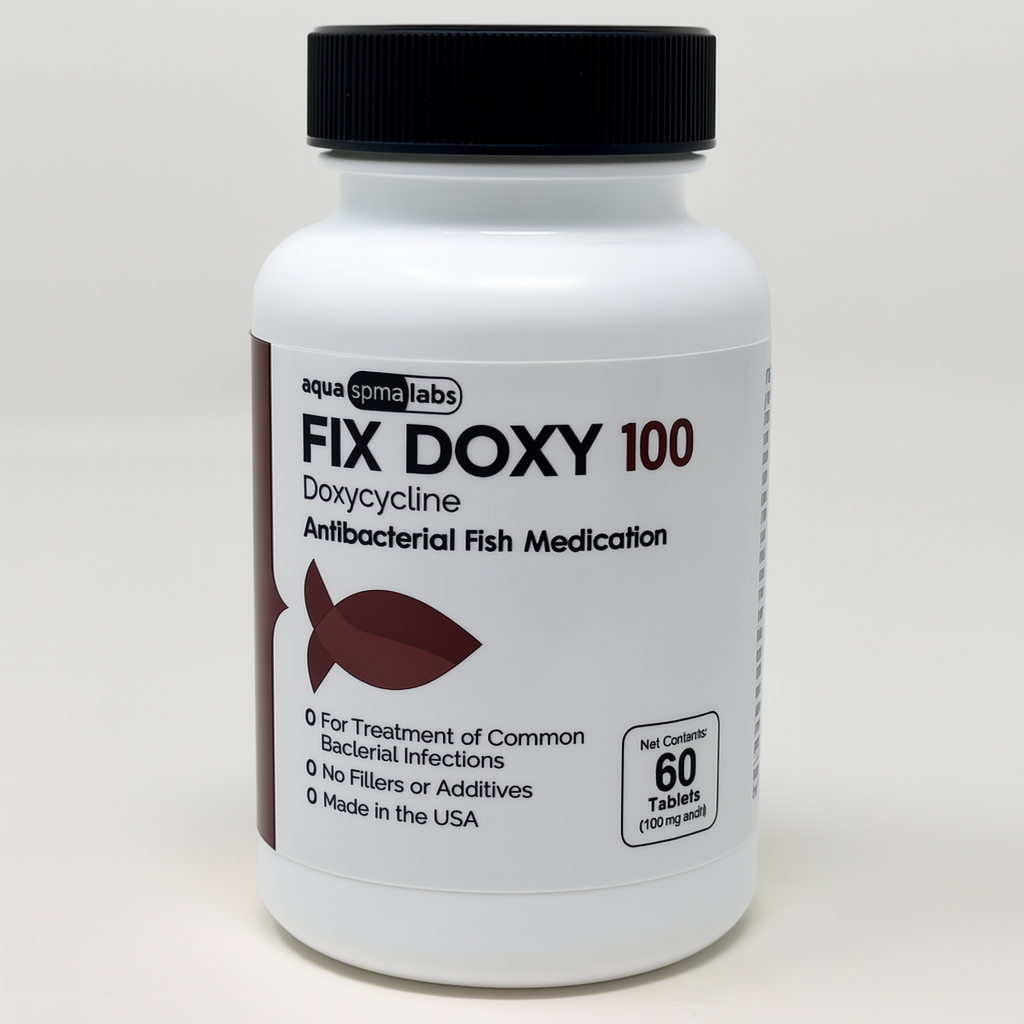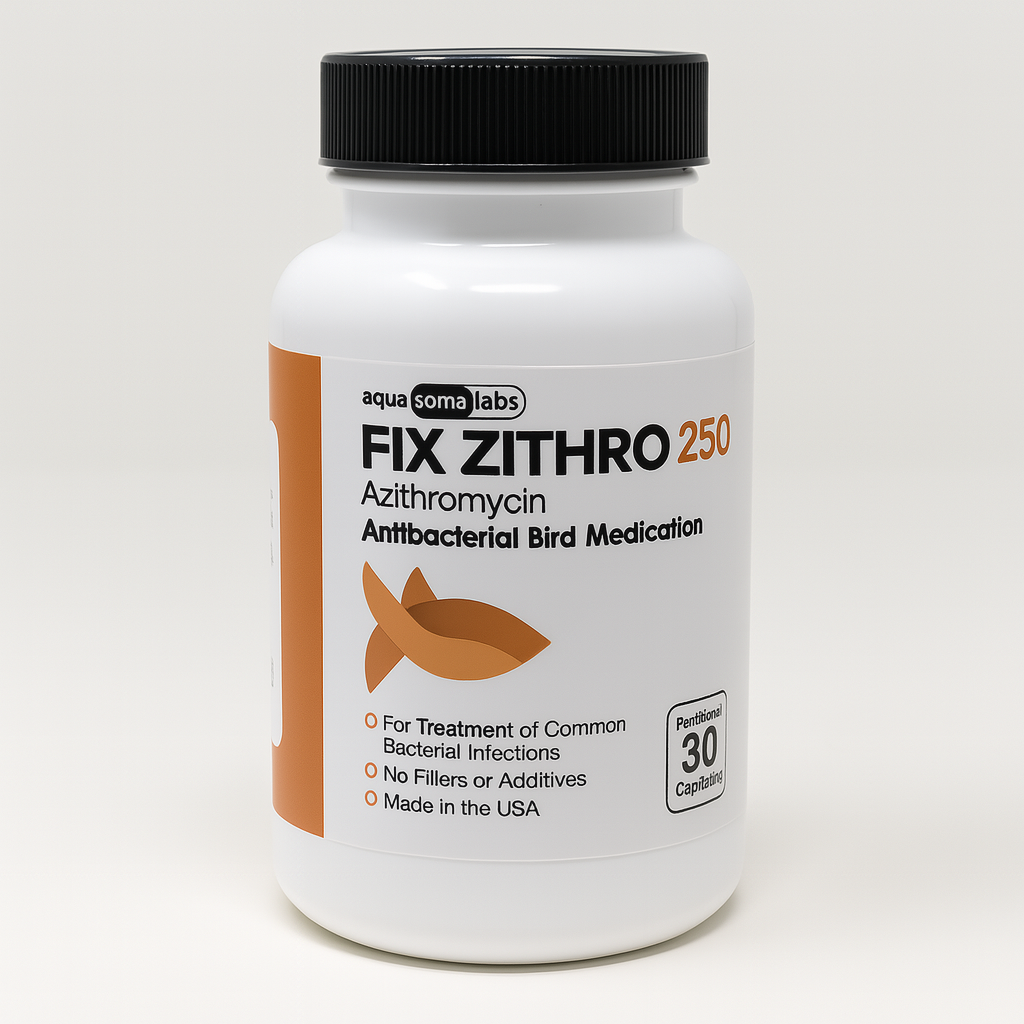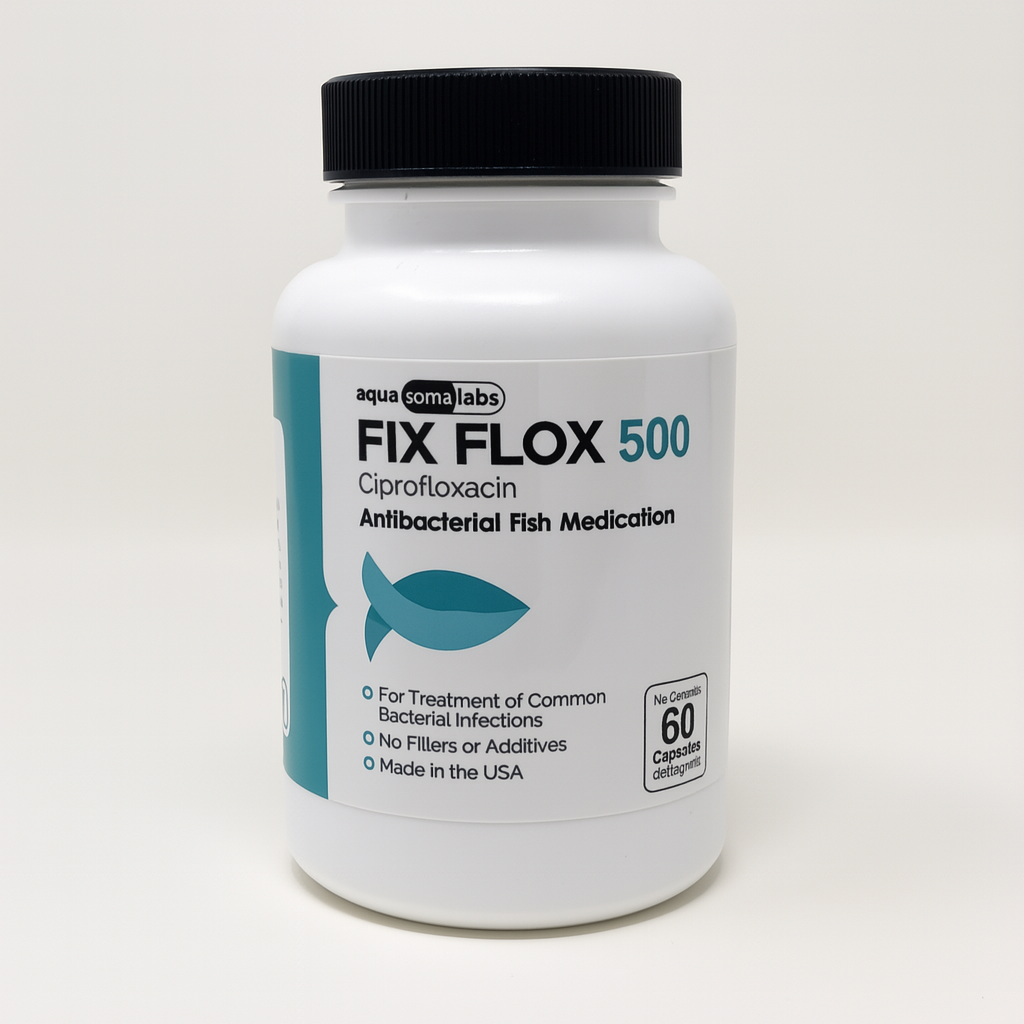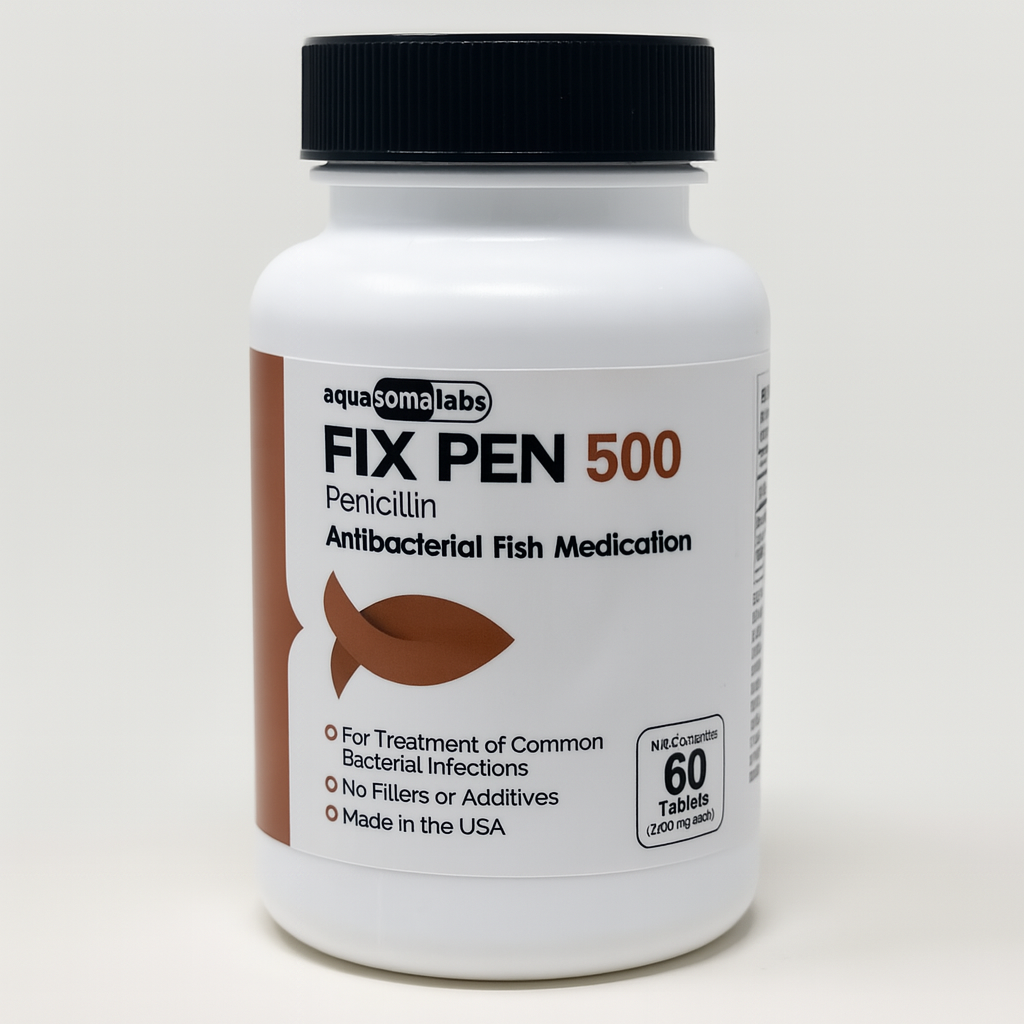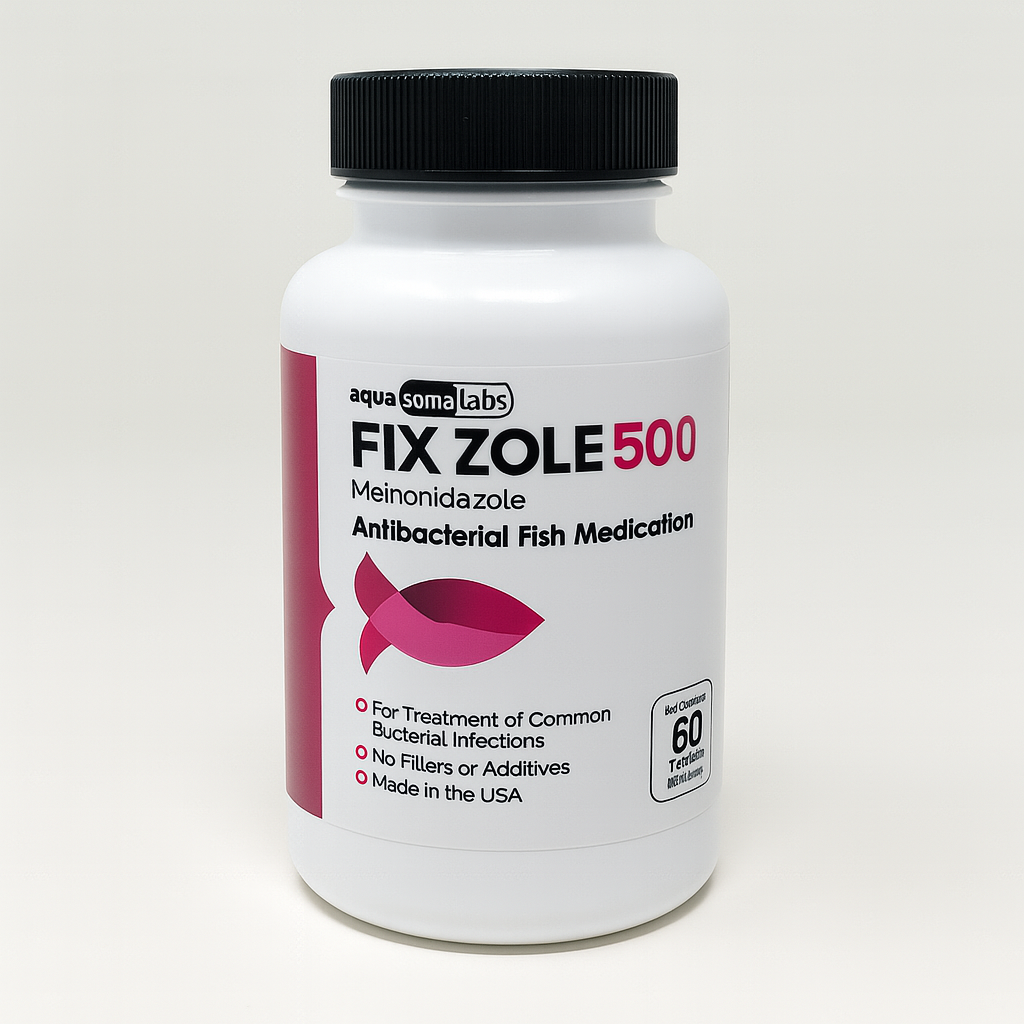Frequently Asked Questions
General Buying & Legal Questions
Can I buy dog antibiotics online without a prescription?
Yes—federal law permits OTC veterinary antibiotics for companion animals. Our products are labeled “for canine use,” so no prescription is required, but a veterinarian’s guidance is still recommended.
Are your antibiotics FDA-approved?
All active ingredients come from FDA-registered manufacturers and meet USP purity standards before being compounded into dog-labeled capsules.
Do you ship to every U.S. state?
We ship to all 50 states and Washington DC. We cannot ship internationally at this time.
Can you ship to P.O. Boxes?
Standard USPS can reach P.O. Boxes. FedEx 2-Day and Overnight require a street address.
How fast will my order arrive?
Standard: 3–7 business days. FedEx 2-Day: 2 business days. Overnight: 1 business day after dispatch.
What payment methods do you accept?
Visa, MasterCard, American Express, Discover, Apple Pay, Google Pay, Shop Pay, and PayPal.
Is checkout secure?
Yes—our platform is PCI-compliant and protected by 256-bit SSL encryption.
Can I change or cancel an order after placing it?
Email support@dogsantibiotics.com within one hour. Cancellation after processing is not guaranteed.
Do you charge sales tax?
Sales tax is collected automatically where required by state law.
Do you offer bulk or breeder discounts?
Orders over $400 receive automatic volume pricing. Contact support for custom quotes.
Product & Ingredient Questions
What antibiotics do you carry?
Amoxicillin, Doxycycline, Cephalexin (Dog Flex), Clindamycin, Ciprofloxacin, Metronidazole, and Trimethoprim-Sulfa.
Are the ingredients the same as human medications?
Yes—the active molecules are identical USP-grade compounds; differences lie in labeling, lot tracking, and canine-specific dosing instructions.
Are dog antibiotics the same as fish antibiotics?
The chemicals are identical, but capsule size, concentration, and excipients differ. Dog capsules are dosed by body weight, not aquarium volume.
Can I give fish antibiotics to my dog?
Not recommended—fish products lack canine dosing guidance and may contain carriers untested for mammals.
What is the shelf life?
18–24 months from compounding; the exact “Best By” date is stamped on each bottle.
Are your capsules flavored?
Most are beef-liver flavored to aid compliance.
Are they gluten-free?
Current batches test below 5 ppm gluten—qualifying as gluten-free.
Are they safe for pregnant or nursing dogs?
Consult a veterinarian first; some antibiotics (e.g., doxycycline) are contraindicated late in pregnancy.
Can puppies take these antibiotics?
Puppies over 8 weeks may take amoxicillin or clindamycin under vet guidance. Doxycycline is usually delayed until adult teeth erupt.
Do you sell liquid suspensions?
Yes—amoxicillin and clindamycin are available in 100 mL ready-to-mix bottles.
Dosage & Administration
How do I calculate the correct dose of amoxicillin?
The general guideline is 5 mg per pound of body weight, given twice daily.
How long should a typical antibiotic course last?
7–14 days, or 48 hours beyond symptom resolution—whichever is longer.
What if I miss a dose?
Give it as soon as remembered unless the next dose is due soon. Never double-dose.
Can I stop treatment when my dog looks better?
No—stopping early promotes resistant bacteria. Finish the full course.
Should antibiotics be given with food?
Amoxicillin: either way. Doxycycline & Clindamycin: give with a small meal to reduce GI upset.
How can I hide capsules in food?
Pill pockets, cream cheese, or a small piece of deli meat work well.
Do you provide a dosing chart?
Yes—our Dosage Calculator page converts weight to milligrams and capsule count automatically.
Can I split capsules?
No—powder may not distribute evenly. Choose a lower-strength capsule instead.
How do I dose liquid antibiotics?
Shake well, draw the exact milliliters with the provided syringe, and squirt between cheek and gums.
Are injectable forms available?
Penicillin G procaine vials are sold to licensed clinics only—not OTC.
Safety & Side-Effects
What are common side-effects of amoxicillin?
Mild diarrhea, soft stools, or reduced appetite. Severe vomiting or rash warrants vet attention.
How do I know if my dog is allergic?
Watch for hives, facial swelling, or breathing difficulty—seek emergency care immediately.
Can antibiotics cause yeast infections?
Broad-spectrum drugs can disrupt normal flora; probiotics are recommended.
Which drugs interact with doxycycline?
Antacids, iron supplements, and certain seizure medications can reduce absorption.
Should I give probiotics with antibiotics?
Yes—administer probiotics at least two hours after each antibiotic dose.
Can antibiotics lead to resistance in dogs?
Yes—underdosing or stopping early encourages resistant strains.
Is over-the-counter Neosporin safe for dogs?
For minor cuts, a thin layer is generally safe, but dog-specific ointments are preferable.
Can my dog take human antibiotics in an emergency?
Many overlap, but dosages differ. Use only with professional vet guidance.
Are there natural alternatives?
Herbal or colloidal-silver products lack robust clinical evidence and should not replace proven therapy.
Do antibiotics affect vaccines?
No—antibiotics do not interfere with vaccine efficacy.
Fish-vs-Dog Antibiotics Clarifications
Why do some owners use fish antibiotics for dogs?
Fish products were historically easier to buy without a prescription; however, canine-labeled capsules now provide accurate dosing and safety info.
Is the amoxicillin in Fish Mox the same as Dog Mox?
Both contain amoxicillin trihydrate USP. Dog Mox capsules are sized for 500 mg or 250 mg canine doses; Fish Mox is dosed per aquarium gallon.
Can fish antibiotics harm my dog?
The active drug is identical, but fish capsules may use excipients untested for canine safety.
Are fish-bottle dosages accurate for dogs?
No—fish dosing is based on water volume, risking under- or overdosing in dogs.
Why do dog antibiotics cost more than fish products?
Additional steps: canine-grade capsules, flavoring, GMP veterinary facility certification, and liability coverage.
Will regulators ban OTC fish antibiotics?
Proposed FDA rules may tighten labeling, but canine-labeled OTC products remain unaffected.
Can I use leftover fish antibiotics on cats or poultry?
Cross-species use without vet oversight is discouraged; metabolism and dosing differ.
Do you sell fish antibiotics?
Not on this site—visit our sister store for aquarium products.
How do I convert fish-antibiotic mg to canine mg/lb?
Divide capsule mg by body weight (lb) and align with the 5 mg/lb guideline, or use our dosage calculator.
Will dumping treated aquarium water harm microbes outside?
Yes—antibiotics can disrupt soil microbiota; dispose per local hazardous-waste guidelines.
Account, Returns & Support
How do I track my shipment?
Use the tracking link in your shipping-confirmation email or log into My Account → Orders.
How do I start a return?
Email support with your order number and reason; we’ll reply with a Return Authorization number and instructions.
How long do refunds take?
5–7 business days after we receive and inspect the return.
What if my dog spits out a capsule?
Administer a fresh dose; do not double-dose if most of the medication was swallowed.
Can I get automatic refills?
Select “Subscribe & Save” at checkout for 90-day intervals.
Do you price-match other pharmacies?
Send a valid competitor link; we beat the price by 5 % on identical products.
How do I store leftover capsules?
Keep tightly closed at 68–77 °F (20–25 °C), away from moisture and sunlight.
Can I freeze antibiotics for longer shelf life?
Freezing is not recommended; temperature swings can degrade potency.
Where can I read reviews?
Verified buyer reviews appear on every product page under the “Reviews” tab.
How do I contact customer service?
Email support@dogsantibiotics.com (Mon–Fri, 9 AM–5 PM ET) or visit our Contact Us page.
- Choosing a selection results in a full page refresh.
